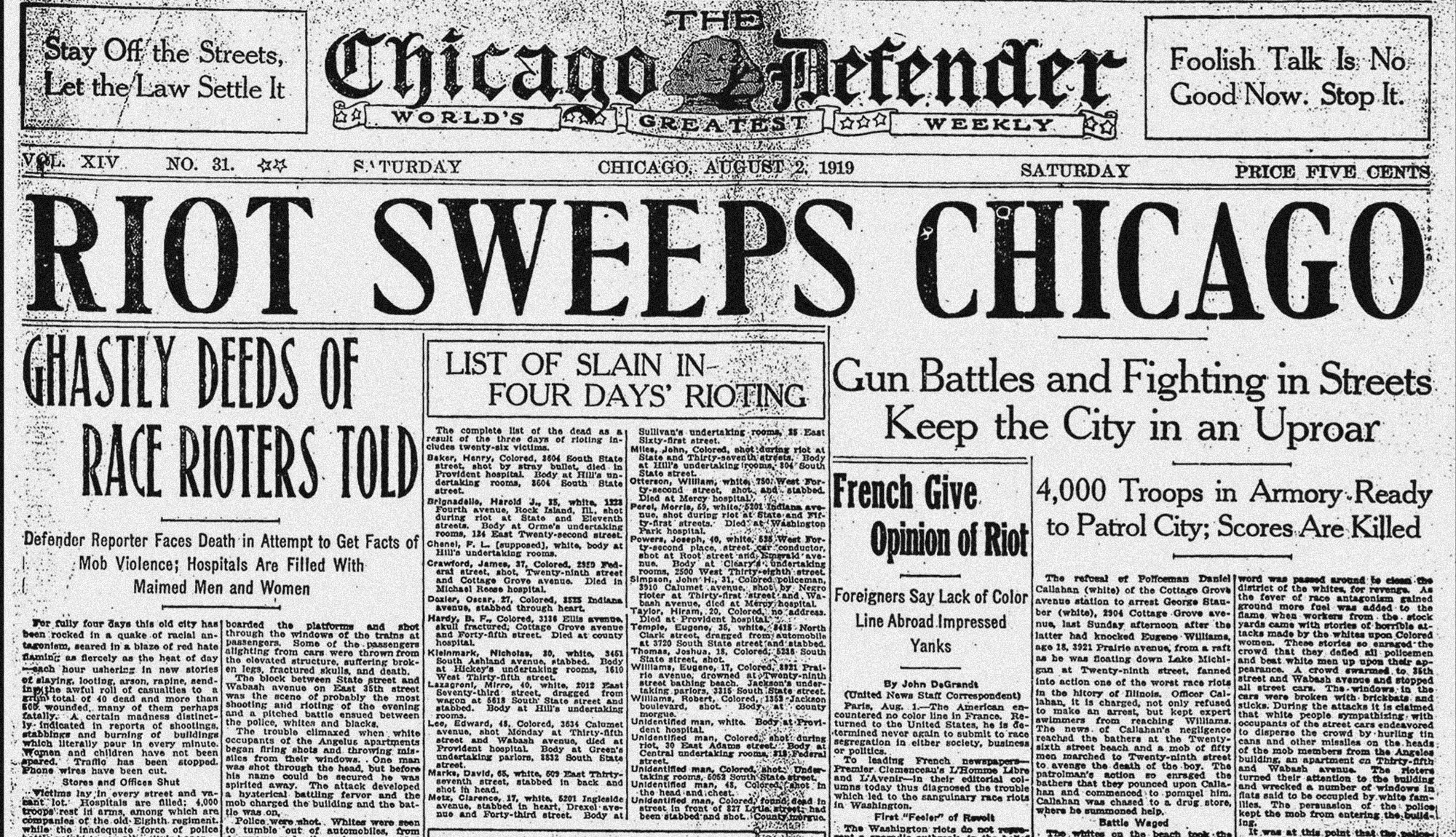Introduction
The Great Migration
The Race Riot of 1919
Aftermath and Legacies
Why It Matters Today
Historical Photos
Introduction

If you ask a Chicagoan about the city’s history of racism, they might talk about the murder of Emmett Till, or perhaps the 1968 uprisings that followed Martin Luther King Jr.’s assassination. Many will speak about recent uprisings against police brutality, and the numerous killings by police officers of Black and Brown Chicagoans, namely Fred Hampton, Laquan McDonald, Rekia Boyd, Ronald Johnson, and Adam Toledo.
It is far less likely that the average Chicagoan would talk about the death of Eugene Williams, the African American teenager stoned and drowned by a white man for floating his raft over an invisible line into a “whites-only” South Side beach in July 1919—the event that sparked the most violent week in Chicago’s history. The only current physical memorial acknowledging the riot is a small plaque located near the beach at 29th Street where Williams was killed, and which was paid for by local high school students and installed in 2009. The Race Riot of 1919 was not officially commemorated by the City of Chicago until its centennial in 2019. This silence around the city’s worst incident of racial violence prompted Chicago’s Newberry Library to ask a century after the event: “Why are Chicago’s race riots of 1919 overlooked in the city’s collective memory?”
We invite you to read on to learn more about the Chicago Race Riot of 1919, its aftermath, its legacies, and importantly, why this history and its memory matter today.
A note on language: we recognize the term “race riot” has taken on many different meanings over time. In the summer of 1919, both Black and white commentators generally used the term “race riot” to refer to the racial violence in Chicago and elsewhere in the United States. We define “race riot” as racist mob violence perpetrated by white people against Black people. Notably, in the case of the Chicago Race Riot, Black people also resisted this mob violence and fought back to defend their right to humanity.
For additional resources on the 1919 riot and the broader “Red Summer of 1919,” visit the Newberry Library’s Chicago 1919 website, and Visualizing the Red Summer.